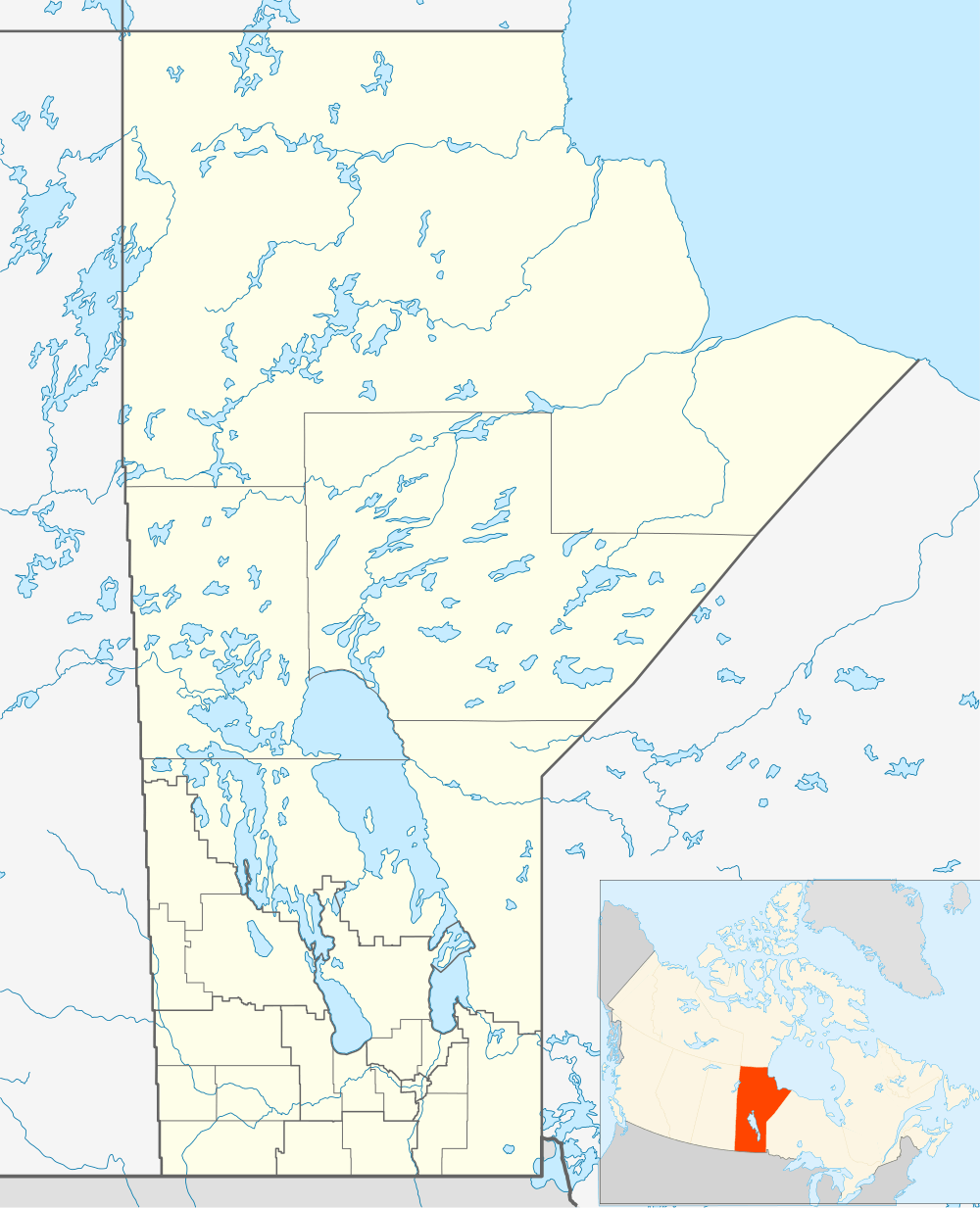Starbuck, Manitoba

Starbuck is a small community in Manitoba near the La Salle River, and is located within the Rural Municipality of Macdonald.
Starbuck is about a 25 minute drive from Winnipeg along Provincial Trunk Highway (PTH) 2. Also Provincial Road 332 runs north and south of town. The Canadian Pacific Railway's Souris line still runs through Starbuck providing the primary means of shipping grain out of the terminal. Passenger train service was halted a number of decades ago. Bus service to and from Winnipeg is provided 3 times per week.
Starbuck has three churches (Catholic, Lutheran, and United), a community hall, skating and curling rinks, and an early/middle years school. Also there is a butcher shop, a general store, a convenience store, a hardware store, a hotel, an insurance office, a credit union, a trucking company, a landscaper, a large grain terminal and an 18 hole golf course. As well there are several other businesses in and around Starbuck.
History
First Nations and Métis people had lived in the area well before the arrival of European families who began settling around Starbuck by 1870. In 1881 the railway came through and in 1885 the community was named Starbuck by the contractor who graded the railway roadbed. According to Geographical Names of Manitoba the contractor's name was either Vanderstice, Vanderslie, or Vanzile. Also it may be that Starbuck was named after Starbuck, Minnesota or a similar named town in Germany. The Post Office was opened in 1887.
There is a long held fable of Starbuck being named after two oxen, Star and Buck, who drowned in the La Salle River (formerly the Stinking River) where the community is now. However this story is very similar to how Starbuck, Minnesota got its name. In the end, it might have been the Minnesota community was named after William H. Starbuck, a railroad financier from New York.
By the early 1900s Starbuck was booming. Families compromising an eclectic mix of European heritages began settling in the area. The Métis reserve that was located west of town gave way to a number of these families. A large drainage project resulted in the Codner Drain which empties into the La Salle River. A passenger train came through twice a week. There were two general stores, a blacksmith, butcher, bank and hotel.
Climate
| Climate data for Starbuck | |||||||||||||
|---|---|---|---|---|---|---|---|---|---|---|---|---|---|
| Month | Jan | Feb | Mar | Apr | May | Jun | Jul | Aug | Sep | Oct | Nov | Dec | Year |
| Record high °C (°F) | 6.5 (43.7) |
10 (50) |
16.5 (61.7) |
36 (97) |
39.5 (103.1) |
39 (102) |
37 (99) |
41.5 (106.7) |
39.5 (103.1) |
32 (90) |
21.1 (70) |
10.6 (51.1) |
41.5 (106.7) |
| Average high °C (°F) | −12.6 (9.3) |
−8.3 (17.1) |
−1.2 (29.8) |
10.3 (50.5) |
19.8 (67.6) |
23.7 (74.7) |
25.8 (78.4) |
25.7 (78.3) |
19.1 (66.4) |
11.3 (52.3) |
−0.9 (30.4) |
−9.6 (14.7) |
8.6 (47.5) |
| Daily mean °C (°F) | −17.7 (0.1) |
−13.6 (7.5) |
−6.3 (20.7) |
3.8 (38.8) |
12.1 (53.8) |
16.8 (62.2) |
18.9 (66) |
18.2 (64.8) |
12.4 (54.3) |
5.3 (41.5) |
−5.5 (22.1) |
−14.2 (6.4) |
2.5 (36.5) |
| Average low °C (°F) | −22.6 (−8.7) |
−18.8 (−1.8) |
−11.4 (11.5) |
−2.7 (27.1) |
4.5 (40.1) |
9.8 (49.6) |
12 (54) |
10.7 (51.3) |
5.6 (42.1) |
−0.7 (30.7) |
−9.9 (14.2) |
−18.8 (−1.8) |
−3.5 (25.7) |
| Record low °C (°F) | −41 (−42) |
−43 (−45) |
−35 (−31) |
−26.7 (−16.1) |
−15 (5) |
−3 (27) |
0 (32) |
−2.5 (27.5) |
−7.5 (18.5) |
−24 (−11) |
−36.5 (−33.7) |
−39.5 (−39.1) |
−43 (−45) |
| Average precipitation mm (inches) | 24.7 (0.972) |
20.5 (0.807) |
28.1 (1.106) |
33.3 (1.311) |
60 (2.36) |
93.2 (3.669) |
79.4 (3.126) |
69.2 (2.724) |
54.8 (2.157) |
41.2 (1.622) |
29.2 (1.15) |
24.7 (0.972) |
558.1 (21.972) |
| Source: Environment Canada[1] | |||||||||||||
Media
The Starbuck Communications Tower (although it is much closer to Springstein than Starbuck) transmits the signals of CBWT, CBWFT, CBW-FM, and CKSB-FM to places within 100 kilometres of its location. It is the tallest free-standing structure in the province at 1,064 feet (324.31 m).[2]
Around 2002, ROGERS set up the ROGERS Communications Tower, as a transmitter for its 92 CITI-FM and 102 Clear FM because ROGERS felt that the CBC-owned tower caused multipath distortion. Canwest Global's COOL FM had originally wanted to install its transmitter on the CBC tower, but they also moved it to the ROGERS tower.,[3] and to decrease the EIRP from 100,000 to 63,700 watts.[4]
References
- ↑ "Canadian Climate Normals 1971–2000". Environment Canada. Retrieved 19 August 2012.
- ↑ "CBWT Will Switch to Channel 6". Winnipeg Free Press. November 5, 1964. p. 3.
- ↑ "Broadcasting Application CRTC 2003-39". Government of Canada - CRTC. July 23, 2003.
- ↑ "Broadcasting Decision CRTC 2003-470". Government of Canada - CRTC. September 19, 2003.
External links
Coordinates: 49°46′20″N 97°37′02″W / 49.77222°N 97.61722°W